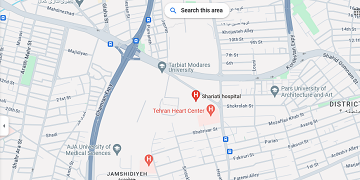The use of biodegradable polycaprolactone-tricalcium phosphate patient-specific prostheses made with a 3D bioprinter in rhinoplasty for evaluating the beauty, function and satisfaction of the patient
Summary of the necessity of project implementation
Choosing the right material is one of the important issues of augmentation of the nose. This procedure is usually performed in patients with nasal septum deviation and wide lobule with columella contraction and nasal tip defect. (1) In particular, achieving the ideal nasal tip, which is related to both the proper projection of the nasal tip and the prolongation of the length and height of the nose, the selection of the most appropriate grip and surgical technique pose a serious challenge to surgeons. Although autologous materials are certainly ideal for all types of implants in rhinoplasty, there are several problems associated with autologous materials, such as limited and incalculable amounts available for use, donor site complications, and incalculable rates of post-implantation degradation. (2) As a replacement for autologous materials, new alloplastic materials are needed. Silicone, expanded polytetrafluoroethylene and high-density porous polyethylene are widely used synthetic materials. (3) However, non-absorbable materials currently have limitations and serious complications such as different degrees of hardness, extrusion, deviation, infection and inflammation. (2,3) Recently, the primary paradigm of alloplastic materials in nasal surgery has been changed towards biodegradable and biocompatible synthetic materials that can replace or complement non-absorbable alloplastic materials. Polycaprolactone (PCL) has received much attention due to its desirable properties. Polycaprolactone (PCL), which is a hydrophobic and biodegradable polymer, has several beneficial properties for use in orbital fracture repair. Among its positive features are slower degradation speed, less reaction of foreign bodies, sufficient mechanical strength, and greater flexibility for manipulation compared to other absorbable polymers (4). Also, in the studies conducted, PCL has been suggested as a safe material for implants in nasal reconstruction, which shows good stability through integration into the host tissue and maintaining the immune response. (3). It is a combination of polycaprolactone (PCL) and beta-tricalcium phosphate (ß-TCP), which are biocompatible and biodegradable materials. These materials have been used in bone scaffolds and have shown very good osteoconduction properties. (5,6) Polycaprolactone/ß-TCP scaffolds can provide good mechanical strength and durability for use in oral, maxillofacial surgery. In addition, recent advances in computer-aided design and the development of three-dimensional (3D) printing technologies and their applications in regenerative medicine have facilitated the manipulation and fabrication of PCL/ß-TCP components, which enable the production of patient-specific implants, and in studies Clinical trials such as use in skull reconstruction and zygomatic-maxillary defects have shown favorable properties. (7-9). To the best of our knowledge, recent studies on PCL implants in rhinoplasty have been limited to prefabricated PCL grips. (10–12) No human clinical studies have investigated patient-specific PCL/ß-TCP implants in rhinoplasty. Has not checked. Our aim is to report the clinical application of 3D printing bioabsorbable PCL/ß-TCP in rhinoplasty and to evaluate the surgical outcome in terms of aesthetics, function and patient satisfaction.
Start Year:2024




Send to friends